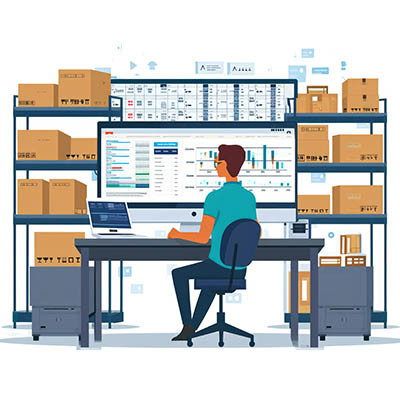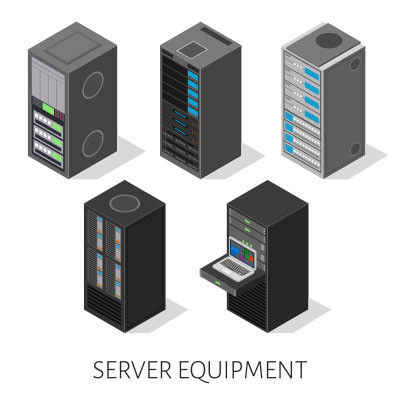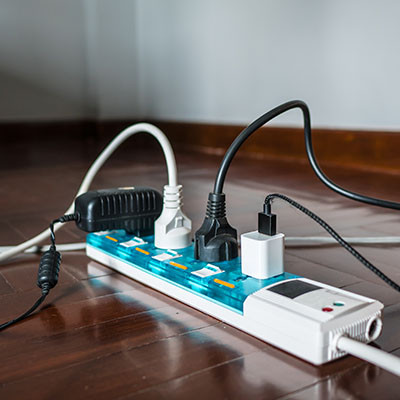Ferrum Technology Services Blog
Your Point of Sale (POS) system is the backbone of your business, handling transactions, tracking sales, and keeping everything running smoothly. But like any technology, it can become outdated or start causing headaches. If you’re wondering whether it’s time for an upgrade, here are five major signs to look out for.
It’s always good to know what kind of technological assets your business has at any given time, but some business owners don’t keep a detailed inventory. If you don’t know what you have, how will you know what you need? Let’s discuss some of the ways you can manage your IT inventory or make your current practices more effective.
Managing your organization’s data is more than just another thing that you have to gloss over in your attempt at running your business. The simple truth is that your data is one of your business’ most valuable assets. There are several parts to every organization’s data management strategy, and today we will go through three of the most crucial: Storage, sharing, and security.
The printer is a technology we can’t escape. In many ways, we can't live without them, but they sure know how to drive us crazy. You’d think printing would be simple, but when issues pop up, it’s easy to wonder why printers are so unreliable. Here are the main reasons printers tend to mess up, as most problems fall into one of these three categories. Let’s take a look at them:
You may not understand just how crucial keeping your business’ technology up to date is, but it can be the best defense at battling some extraordinary downtime that can not only cost you quite a bit, but also frustrate your staff to the point where it becomes a whole other problem for your business. This month, we discuss a five-year plan for your business’ hardware and why it is a solid practice to stay ahead of many of the technology problems businesses face.
When did you last turn your mobile device off and on again?
While any IT provider worth their salt would be the first to tell you that this is troubleshooting 101, another source also recommends a quick reboot every so often: the National Security Agency.
Let’s explore why the NSA shared this advice and what difference following it can make.
With mobile devices playing a crucial role in modern business it’s extremely important to have a clear plan for managing them. Unfortunately, this isn’t so cut and dry. Today, we’ll explore the differences between two of the most popular mobile management strategies: Bring Your Own Device (BYOD) and Corporate-Owned, Personally Enabled (COPE).
Your computer’s CPU is one of the most sensitive, advanced pieces of technology that you probably don’t think too much about. The CPU itself is just around 4-5 centimeters in length and width, and it handles all of the data processing in your computer. Every single thing you do on a computer gets calculated through the CPU. Most modern CPUs have billions of microscopic transistors in that tiny little space. These transistors are so small that you can fit hundreds of them on a single red blood cell, or thousands of them in the width of a human hair.
So it’s inevitable that something can go wrong. Many fairly modern computers are experiencing a bug right now that could potentially and permanently damage the CPU. There’s a patch to fix it, but if the damage is already done, the patch won’t repair it.
Managing your organization's technology can pose unexpected challenges. Firstly, many businesses overlook their technology as long as it functions adequately. Secondly, technology turnover within an organization can be rapid. In this month's newsletter, we'll go into essential steps for gaining control over your technology inventory.
Servers contribute a significant effort toward your computing infrastructure, so it makes sense that you want devices that can fulfill your needs with performance, reliability, and security. To get the most out of your server units, we like to recommend you consider the following six tips when choosing new server hardware.
Self-service checkout registers are incredibly popular with Gen Z, and while there are differing opinions on them and their impact on the workforce, there’s no denying that they are here to stay. That said, there is much discussion on whether or not biometric payment processing would make for a more efficient method of checkout. Spoiler alert: it doesn’t, and it’s not welcome for either consumers or organizations.
The Right to Repair movement has evolved from a simple idea into a full-fledged campaign, with numerous states enacting measures to enhance the rights of consumers and businesses who use various technologies daily. Let's take a moment to assess the current status of this movement and explore what it means for businesses.
Expanding your business' technological infrastructure is a pivotal step toward achieving sustainable growth. With the right strategies and tools at your disposal, you can effectively fine-tune your operations and boost productivity. Let's delve into essential approaches and considerations when it comes to the technology-driven expansion of your business.
Digital storage is one part of computing that has seen astronomical growth over the past several decades, and with the solid state drive (SSD) more affordable than ever, you have to wonder how well your old hard disk drive (HDD) is holding up. Despite the cost difference between the two, the HDD is a viable option, albeit a mechanical one that is prone to breakdown over time.
Most computers you’ll find in the workplace are PCs that run Windows, but Apple is also a major player in the computing and technology landscape. Apple produces sleek and high-end hardware using efficient operating systems, but it’s not all sunshine and rainbows for Apple products and their users. In fact, at one time, they recommended the most absurd fix for one of their products: slamming it on the desk.
There’s nothing more intriguing than finding a random USB drive while cleaning up your office or while out and about. You might feel the urge to plug it in and discover its contents, but we are here to tell you that this is often a bad idea—particularly if the drive is unfamiliar to you. Unlike cloud storage, which is quite transparent, you don’t know what’s on a USB drive until you plug it in, and it’s often too late by the time this happens.
Building a company’s computing infrastructure is a costly and time-consuming process. Sure, you can purchase new servers; or workstations in bulk, but overall it takes some time to get everything set up and running just how you need it to. PC manufacturers are shipping fewer computers than ever before and that may have an impact on your business’ ability to get the technology it needs when it needs it. Let’s take a look.
We’ve all been in the position where we need to plug something in, but the outlet is completely full. Fortunately, there are devices that can help resolve this problem—but as is the case with most things, one option is notably better for business purposes. Let’s go over what makes a power strip different from a surge protector, and why the latter is a far better option for businesses.




















